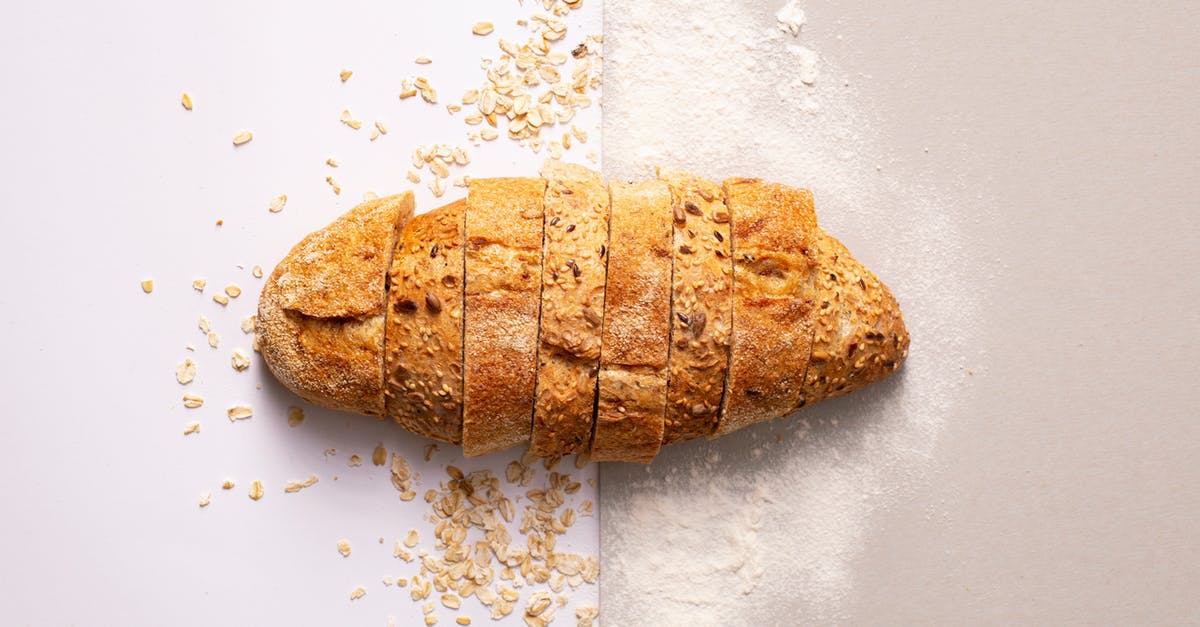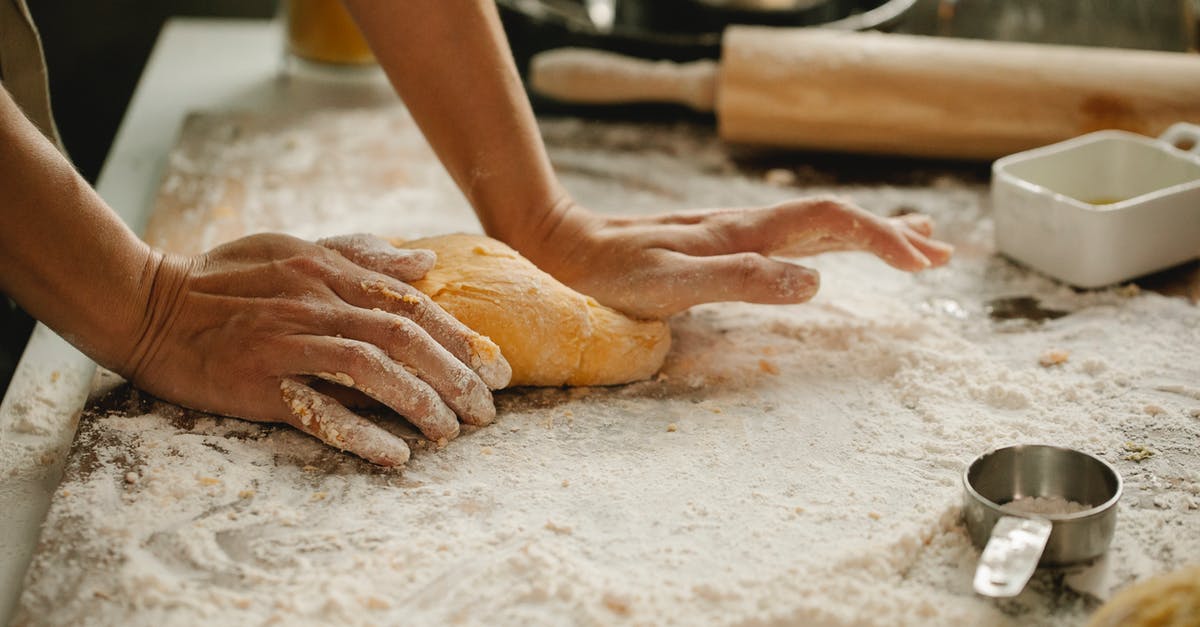Bread dough only rises once

I'm new at baking bread but had a very experienced coach. The dough rises well one time but very little the 2nd time. If I put the dough into the baking pan to rise I get a good result, meaning it at least doubles in volume and makes a tasty loaf. If I punch it down it maybe only rises 20% or so. Is this a sign that the yeast is getting old?
Best Answer
I agree with rfusca that you are overproofing. However, if your yeast is too old, your symptoms would be different. You'd either get a normal(ish) rise with bad tasting dough (because of molds in the fresh yeast), or your first rise will be too slow or won't happen at all. If you get a rise at first and then it slows, your problem is not caused by the yeast being too old.
Yeast consists of living cells. They multiply exponentionally in the right condition, just like any other cells. When they multiply, they use up sugars (and are capable of breaking down starch to sugars before feeding) and produce CO2 as well as less wholesome waste (alcohol, and a compound which stinks of ammonia). The amount of byproducts after a certain time of rising is proportional to the cumulated amount of yeast cells which lived in the dough. The amount of yeast cells which lived in the dough depends on the amount of yeast you started with (duh), time spent proofing, and temperature (rule of thumb: the time you need to proof doubles for every 17°F drop in temperature). And remember, we are talking exponential here: first you have the amount increase slowly, then it explodes pretty quickly.
Within the slow increase of cells, you are allowed to tweak the parameters to suit you. Don't have the time to proof for a long time? Proof at 35°C instead of the 24°C usual in a kitchen. But mostly, you would prefer the slowest rise possible. This comes from the fact that the fermentation of the dough produces tasty compounds in a roughly linear manner. Proof half the time (by choosing a high temperature), and you get the same amount of rise, but half the amount of aroma. But still, you have the options to play around as you want.
However, once you get past the bend in your exponential function, your bread fails. You have altogether too much yeast cells competing for food and producing waste in your dough. They overuse their ressources and die from their own pollution. The missing starches lead to a dough with a certain unhealthy spring to it (if you can degas it at all, because the CO2 pockets in overproofed dough are too numerous and too evenly dispersed, the dough looks like a spiderweb). The dough has some noticeable acetic acid, the sharp taste of alcohol and the harsh smell of ammonia. You should never let it get to that point. (And don't ask why I have such a good knowledge of that dough state).
What you can do is to limit your proofing. First, you can indeed shorten your time at these temperatures. Rfusca's suggestion of a graduated container is good. If you don't have one of the size needed, just stick a small plastic ruler in the dough. Second, forget the sugar. Your dough will rise without it. Sugar gives too big a boost to the yeast at the beginning, because they don't have to waste time breaking down starch for food. And you can imagine what happens to exponential growth if the initial, slow part of the growth is boosted. If you are in the US, chances are that your bread flour already contains small amounts of malt to boost yeast growth anyway. Third, and probably most important, watch your yeast ratio. For a standard yeast bread, it is enough to use 2% live yeast (that's weight percentage relative to the amount of flour, not to the whole) or 1/3 of that amount in active dry yeast. Theoretically, you can go as high as 9% yeast and still handle it, but the dough gets extremly finicky and you need lots of experience to proof it right. Plus, you can't avoid a strong yeasty taste at such concentrations. As for using newer yeast, it won't solve your problem, but old yeast can give you different problems, so if you suspect it's old, replace it. In a lean bread dough (no fat and other additions) your yeast will start just fine when mixed in the flour (active dry yeast) or in the water (fresh yeast), no need to start it with sugar or make a sponge.
Pictures about "Bread dough only rises once"



Quick Answer about "Bread dough only rises once"
Bread can be baked after its first rise, but doing so will sacrifice certain aspects of the bread and you won't get the same flavor, crumb, or texture. You will, however, still get fresh bread even if you do bake it after only one rise.What happens if you only let bread rise once?
This will keep yeast from dying during the extra development and causing off flavors. With a single rise it doesn't matter, but you don't want the dough just to sit around in its same basic arrangement for the second go around.Should bread dough rise once or twice?
According to most baking resources, in order to get the best texture and flavor that is typical of leavened bread, dough should be given a second rise before baking. A second rise allows yeast more time to work, which changes the actual fibers within the dough.Why is my dough not rising a second time?
It could be because you are using a different kind of flour, or whole grain flour. Even sweet bread dough takes a long time to rise. If the dough hasn't risen as much as you expect give it more time. Besides, a slower rise results in a more flavorful bread.How many times should bread dough rise?
Rising: Most bread recipes call for letting the dough rise twice. If you prefer (or need - i.e., pizza) a dough that will have larger bubbles after it is baked, let it rise just once but to somewhat more than double in bulk. If you want a very fine textured product, let it rise three times, e.g., brioche.How long should you leave bread dough to rise for?
More answers regarding bread dough only rises once
Answer 2
Your yeast may be too old, as in a larger portion than usual of the bottle is dead (but some are definitely still alive) - given those rather extended rise times for a 'basic white bread' in a warm (80 degrees) area. Its like you'd be using a smaller amount of yeast.
Since its rising at all I'm a bit suspect of it though, the times should still be proportionally correct and the second rise should still be complete, just extended considerably. Given those times and temperature, it sounds like you may be over proofing your first rise. Considerably over proofing your dough can yield rather low/flat loafs like you're seeing.
Consider measuring your rise in a graduated container to actually determine when its doubled and adjust from there.
New yeast certain wouldn't hurt though.
Sources: Stack Exchange - This article follows the attribution requirements of Stack Exchange and is licensed under CC BY-SA 3.0.
Images: Hatice Yardim, Mariana Kurnyk, Igor Ovsyannykov, Klaus Nielsen
